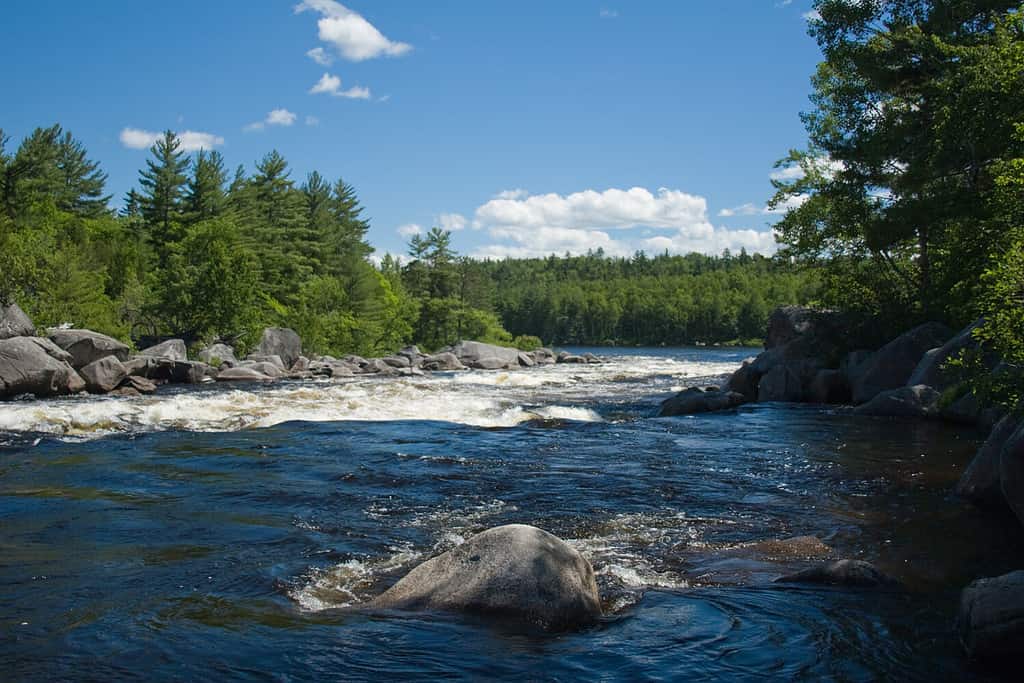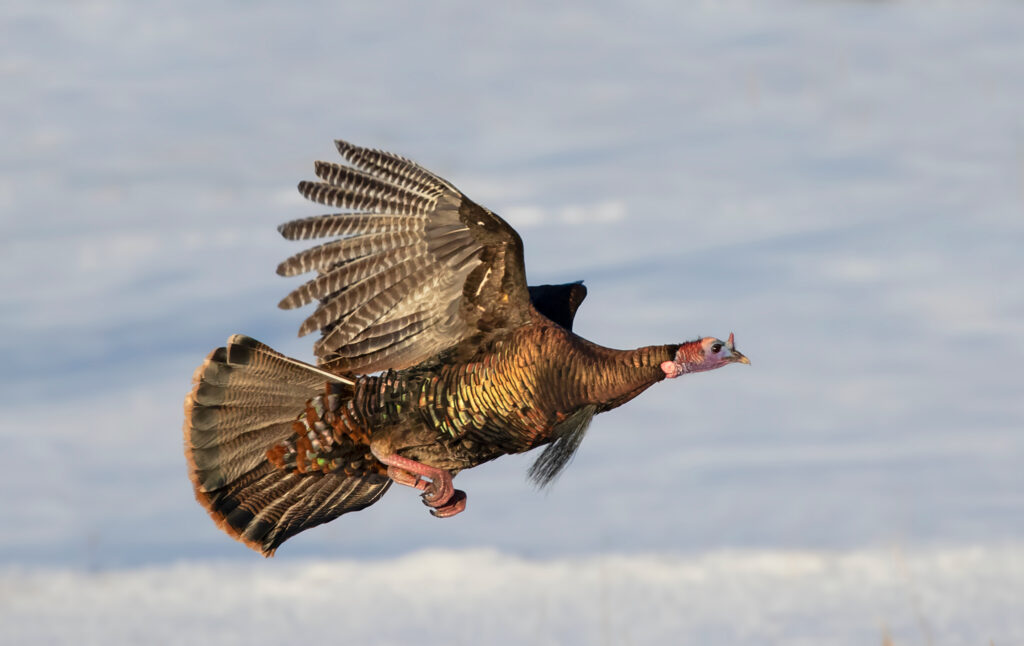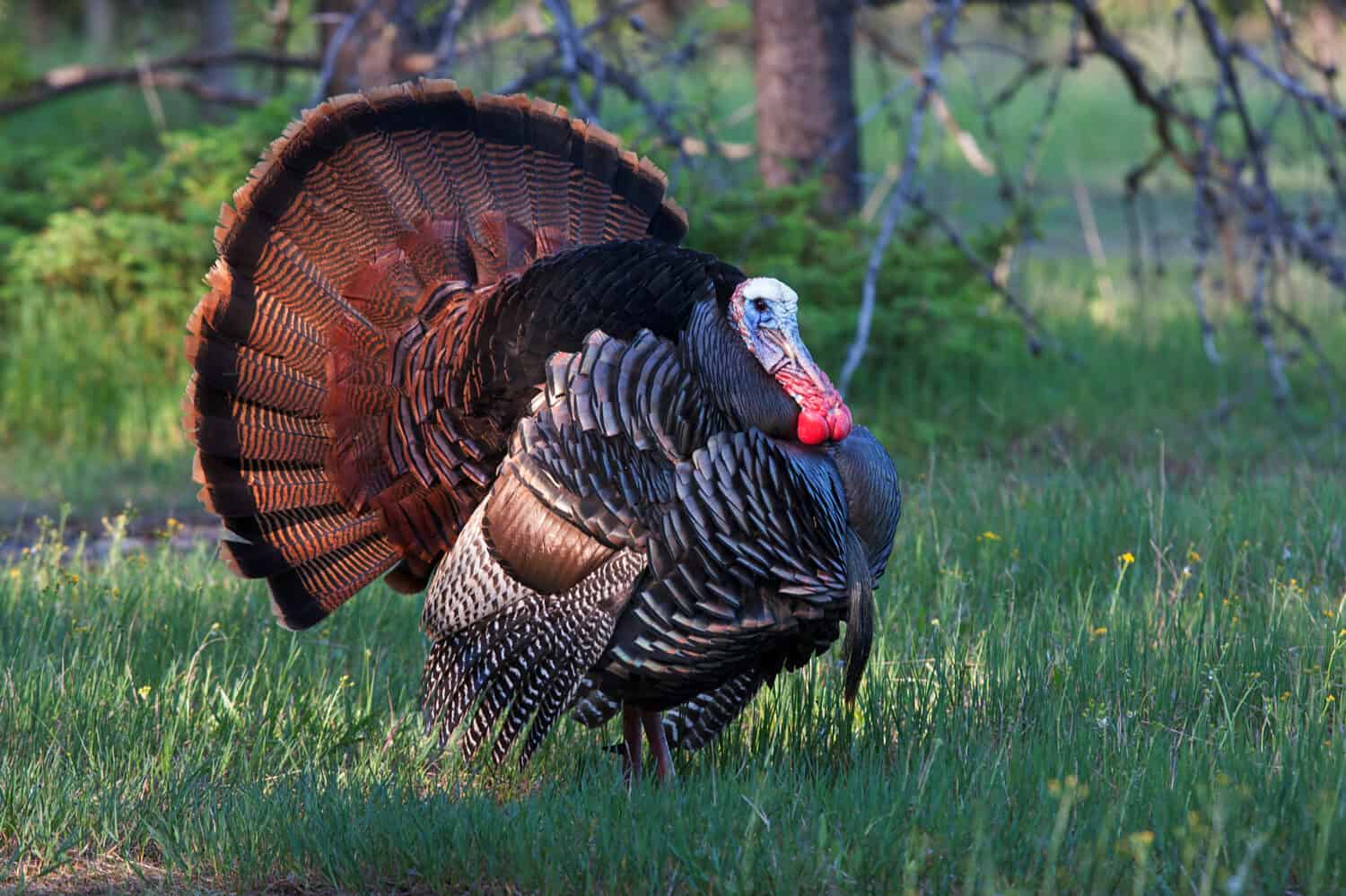Maine is known for its rural swaths of land and great hunting opportunities. Turkey hunting season is no different. Turkey hunting in Maine provides tons of excellent opportunities for hunters, whether you’re experienced or not.
In this guide, we’ll review all the important information you need to know about turkey hunting in Maine, including requirements and costs.
However, it’s important to always check the current hunting guide on the state’s official website. Regulations can be changed at any time, and they often are.
Season Timing
You can only hunt turkeys during certain times in Maine. The turkey season coincides with the birds’ more active behaviors during the spring when the turkeys are actively mating and nesting. Only hunting during this time helps support the turkey population and ensure there are plenty of turkeys for future generations.
The spring turkey season in Maine occurs from late April to early June. The specific date can vary yearly based on the turkey population and other environmental reasons. Spring is a critical time in the turkeys’ lifecycle, as it is when the male turkeys, known as toms or gobblers, become more vocal and visible as they compete for mates.
Therefore, hunters target bearded turkeys during this time. The beard serves as an indication of the bird’s gender and is a legal requirement for harvesting.
The spring season is the most popular season for hunting turkeys. However, Maine also has a fall turkey hunting season. It takes place a few weeks between September and October. However, the dates can vary yearly, so it’s important to check the exact dates.
During the fall season, hunters can harvest turkeys of either sex. This season is often considered a different experience, as turkeys are not as actively vocal and territorial as they are in the spring.
To successfully hunt, you’ll need to take the birds’ behaviors in each season into account. Hunting in the spring is not the same as hunting in the fall.
License Requirements and Costs

Maine offers a lot of different lands for hunting turkey.
©Stephen G. Page/Shutterstock.com
To hunt turkeys in Maine, you’ll need to have a hunting license. The state offers different options for residents and non-residents, with some special licenses based on age.
Residents of Maine must have a valid Resident Hunting License to participate in any hunting. Different ages have different prices and durations. You can purchase a multi-year license sometimes, saving you a bit of money. Some people may qualify for a lifetime license.
Residents can obtain their licenses through authorized agents, online through the Maine Department of Inland Fisheries and Wildlife website, or in person at MDIFW offices.
Non-resident hunters must have a non-resident hunting license. The cost can vary based on your age and the license duration. Non-residents can purchase their licenses from the same places as residents.
In some cases, hunters might require additional permits or licenses, such as a turkey hunting permit, to participate in the turkey hunting season. These permits could come with their own fees, so it’s important to verify the specific requirements for the current hunting season.
Youth and apprentice hunters can also join the hunt, often at a cheaper price. Youth hunters under a certain age have special hunting days and reduced license fees. Apprentice hunters who have completed a hunter safety course can also participate under the guidance of an experienced adult, but special regulations may apply.
Bag Limits and Regulations
Bag limits and regulations play an important role in maintaining a healthy turkey population, ensuring that not too many turkeys are taken each year. These practices ensure that the turkey population is properly supported.
Typically, hunters can harvest up to two bearded turkeys in Maine during the spring season. “Bearded” turkeys are usually male, hence the beards.
Hens aren’t typically allowed to be taken in the spring, as they are nesting and reproducing. Forcing hunters to only take turkeys with a bearded allows only males to be taken.
In the fall turkey hunting season, the bag limit might differ. Hunters are usually allowed to harvest one turkey of either sex during this season. However, it’s important to check, as it changes a lot.
After successfully harvesting a turkey, hunters are required to immediately tag the bird with the appropriate tag provided with their hunting license. The tag must be securely attached to the turkey to show that it has been legally harvested.
If you are stopped, and your catch is checked, they will check this tag, so it’s important that all the information is clear and true.
Hunters may also need to report their turkey harvest to the Maine Department of Inland Fisheries and Wildlife. This reporting helps the state keep track of the turkey population, allowing them to make proper decisions about the local turkey population.
Turkey hunting in Maine usually takes place during legal hunting hours, which are typically set from half an hour before sunrise to half an hour after sunset. It’s essential to adhere to these specified hours to ensure ethical and lawful hunting. You can often find these hours listed in the back of the hunter’s manual.
Regulations tend to restrict hunting methods, too. For instance, you may only be able to utilize certain weapons during certain days, and using electric calls and decoys may be regulated.
Of course, hunters also have to follow all safety regulations, including where and how they hunt. These regulations are common across all seasons, for the most part.
Hunting Zones and Management Districts
Maine is divided into several wildlife management districts and hunting zones, which help the department regulate the turkey population more exactly. Each area may have its own bag limits and regulations. You may not be able to take some at all.
Wildlife management districts (WMDs) are geographical regions within the state of Maine that have distinct wildlife characteristics and management needs. Each district has a specific number or name, allowing you to look at the specific regulations for each area.
Often, the wildlife in these areas has unique challenges or benefits. The habitat conditions may be unique, or the population could be particularly high or low. You’ll need to check the specific regulations of the area you want to hunt in.
On a larger scale, Maine is divided into different hunting zones, each encompassing multiple wildlife districts. The hunting zones have their own regulations, but they are larger than WMDs. You also need to know the regulations of the particular hunting zone you’re in.
Where is the Best Turkey Hunting in Maine?

Wild turkeys can fly short distances up to a quarter-mile.
©Jim Cumming/Shutterstock.com
There are many great places to hunt Turkeys in Maine. It can depend on a range of different factors, and it can even vary from year to year. There are tons of different places to hunt in Maine, so you have plenty of options to choose from.
Regions around towns like York, Kennebunk, Portland, and Augusta have historically shown good turkey populations. These areas offer a mix of forested habitats, agricultural lands, and open spaces that turkeys favor. Many people choose these areas to hunt, and they are traditionally the “better” areas.
Counties like Knox, Lincoln, and Waldo have a mix of forests and farmlands that attract turkeys. Midcoast areas have gained a reputation for productive hunting. However, not as much as in southern and central Maine.
Aroostook County also offers great hunting in Maine. It’s the northernmost county and offers a sizable turkey population.
No matter where you are in the state, you’ll find a vast amount of public land to hunt on. Sometimes, these areas have specific regulations, though, so be sure to check.
Different areas have different regulations, as we have discussed. Therefore, it’s very important that you’re very careful about where you hunt and avoid crossing into new hunting areas without following the regulations properly. Keep track of updated regulations, too, as they can always be changed mid-season as the population’s needs change.
Thank you for reading! Have some feedback for us? Contact the AZ Animals editorial team.








